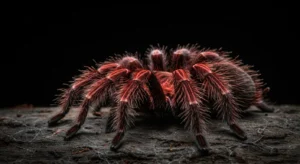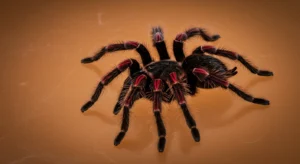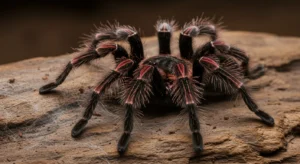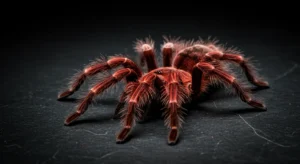How to Spot Signs of Illness in Your Chilean Rose Tarantula
Introduction: Prevention is Key
Chilean Rose Tarantulas (*Grammostola rosea*) are generally hardy creatures, and most health issues arise from improper husbandry (incorrect temperature, humidity, substrate, etc.) or accidents. Recognizing subtle changes in behavior or appearance is crucial for early detection, although treating sick tarantulas can be challenging.
The best “cure” is prevention through meticulous care, ensuring proper habitat setup, diet, and minimal stress.
Normal vs. Abnormal Behavior
It’s important to distinguish normal tarantula behaviors from potential signs of illness:
- Normal Lethargy/Fasting: Can indicate pre-molt, low temperatures, or simply lack of hunger. Not usually a sign of illness unless prolonged or accompanied by other symptoms.
- Burrowing/Hiding: Normal behavior for feeling secure.
- Lying on Back: Normal molting position.
- Occasional Quick Movements: Normal hunting or startled response.
True signs of illness are often persistent changes from the individual tarantula’s baseline behavior.
Signs of Dehydration
Dehydration is common and often preventable. Ensure a shallow water dish is always available and clean.
- Shriveled Abdomen: A severely wrinkled or deflated-looking abdomen (beyond just being thin from needing food) is a major sign.
- Lethargy and Weakness: Difficulty moving, seeming unresponsive.
- Difficulty Molting: Dehydration is a primary cause of molting problems.
Consider offering water via a pipette near the mouthparts if severe dehydration is suspected, but avoid spraying the tarantula directly.

Signs of Physical Injury
- Bleeding (Hemolymph Loss): Tarantulas have clear or bluish hemolymph (blood). Minor leaks from leg joints might seal on their own. Significant loss, especially from the abdomen or carapace connection, is serious. Cornstarch or styptic powder can be applied carefully with a Q-tip to try and stop minor bleeding.
- Limping/Dragging Legs: Indicates potential leg injury.
- Abdominal Rupture: Usually from a fall. Often fatal. Looks like a large, open wound leaking fluid.
Falls are Emergencies: Even short falls can be deadly. Always handle low to the ground and ensure enclosure lids are secure.
Signs of Molting Issues
- Getting Stuck (Dyskinetic Molt): Partially shed, unable to free limbs or abdomen. Often caused by low humidity or dehydration. Intervention is risky and often unsuccessful. Sometimes placing the tarantula in an “ICU” (Intensive Care Unit – a small container with damp paper towels for high humidity) *might* help, but prognosis is often poor.
- Deformities Post-Molt: Bent legs, misshapen carapace. Often corrects with the next molt if minor.
Signs of Parasites or Infection
- Mites: Tiny white or reddish dots moving on the tarantula, especially around the mouthparts or joints. Usually indicates poor hygiene in the enclosure. Requires thorough cleaning and potentially specific treatments (research carefully, as some are harmful to spiders).
- Nematodes: White, thread-like worms emerging from the mouth or anus. This is often fatal. Strict quarantine and hygiene are essential to prevent spread.
- Fungal Infections: White, fuzzy, or discolored patches on the exoskeleton. Often linked to overly damp conditions. Difficult to treat.
- Abdominal Discoloration/Softness: Dark spots or unusually soft/mushy abdomen (not related to pre-molt) can indicate internal bacterial infection or impaction.
Knowing the visual symptoms of sick tarantula species is important for identification.
Understanding DKS
Dyskinetic Syndrome (DKS) is not a specific disease but a collection of neurological symptoms:
- Uncontrolled twitching or jerky movements.
- Inability to right itself.
- Walking in circles, lack of coordination.
- Stiffness or paralysis of limbs.
The exact causes of [DKS in tarantulas](https://www.lopehare.com/tarantula-medical-information/) are debated but often linked to dehydration, pesticide/chemical exposure, fungal infections, or extreme temperatures. Prognosis is often poor, and humane euthanasia may need to be considered in severe cases.
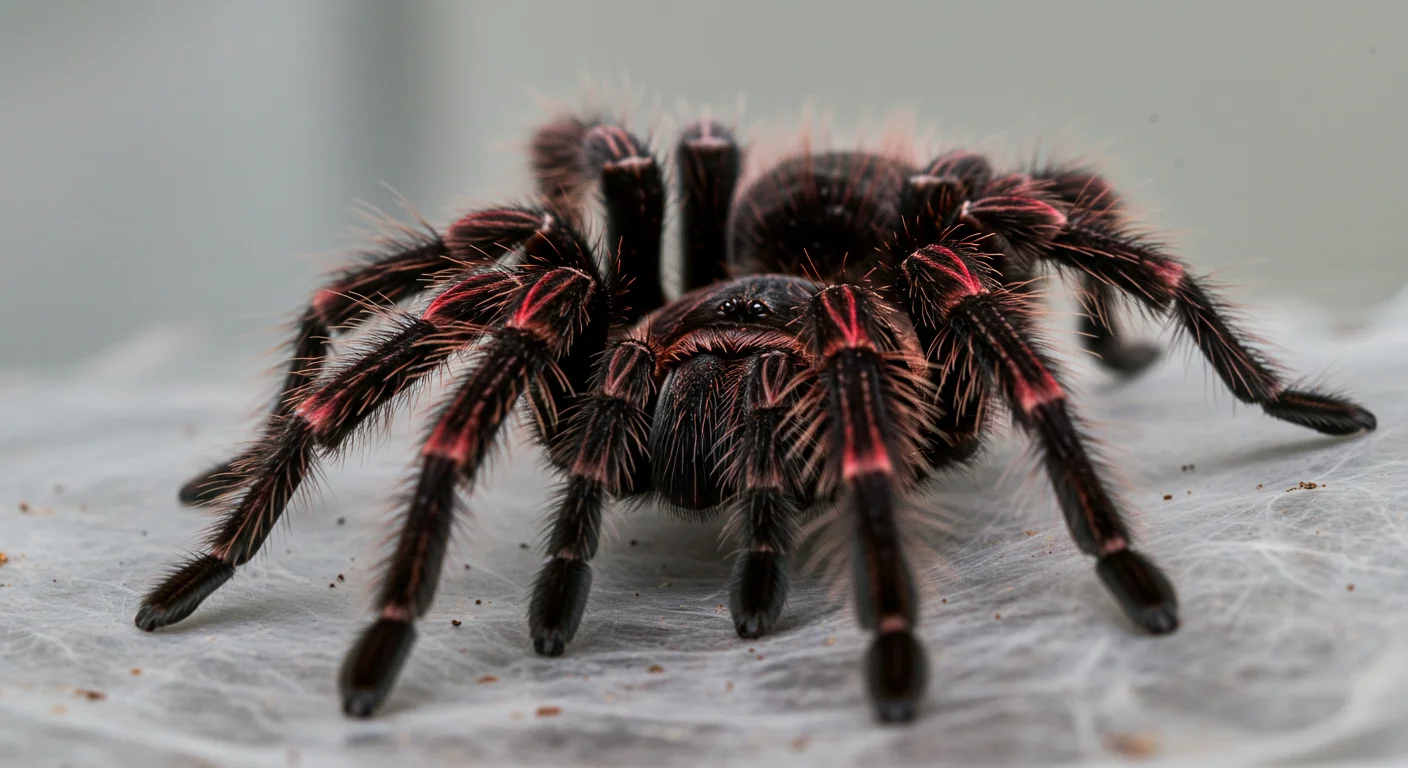
What to Do If You Suspect Illness
- Review Husbandry: Double-check temperature, humidity, substrate condition, and cleanliness. Correct any issues immediately.
- Isolate: If you suspect contagious issues like mites or nematodes, isolate the tarantula and its enclosure away from other pets.
- Provide Water: Ensure clean water is available.
- Observe: Monitor symptoms closely. Take photos or videos if possible.
- Seek Expert Advice: Consult experienced keepers on forums or social media groups dedicated to tarantulas. Be prepared to provide detailed information about your setup and the symptoms. Finding a vet knowledgeable about tarantulas is rare and often expensive, making community knowledge crucial.
Veterinary Care: While ideal, finding veterinarians experienced with invertebrate medicine, especially tarantulas, is extremely difficult. Treatment options are often limited.
Conclusion
Observing your Chilean Rose Tarantula regularly is the best way to establish its normal behaviour and appearance, making it easier to spot potential problems. While some issues like minor injuries or dehydration can sometimes be managed with supportive care and husbandry corrections, many tarantula ailments are difficult to treat. Prevention through proper care, a clean environment, and minimizing stress remains the most effective strategy for ensuring a long and healthy life for your pet.
Information regarding invertebrate pathology is based on common knowledge within the keeping hobby and general veterinary principles.


